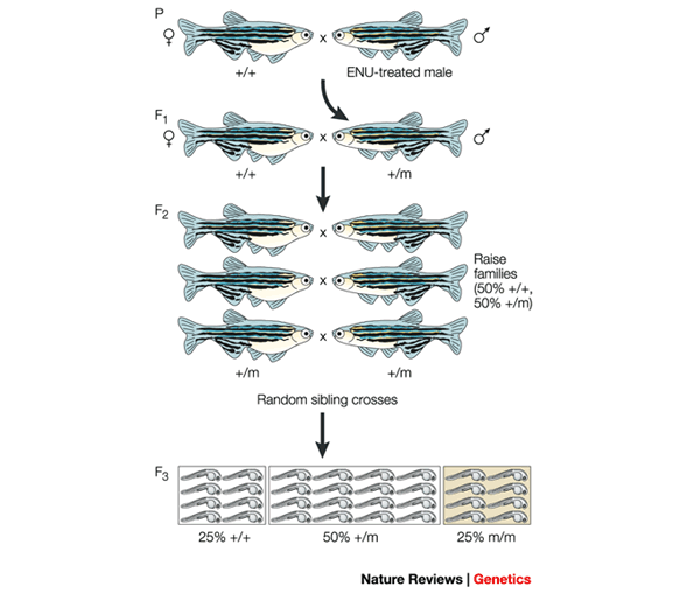Genetic transfer of mutations.
Keywords
Flag Inappropriate
Delete Content

Genetic transfer of mutations.
In F2 screens, a mutagen, such as ethylnitrosourea (ENU), is used to generate hundreds of point mutations in the male pre-meiotic germ cells (spermatogonia). ENU-treated males are crossed to wild-type females to produce the F1 heterozygous progeny. F1 fish are then crossed to siblings to create F2 families, half of which are genotypically heterozygous for a specific mutation (m), whereas the other half are wild type. F2 siblings are crossed, and the resulting F3 progeny are 25% wild type (+/+), 50% heterozygous (+/m) and 25% homozygous (m/m) for a recessive mutation.
This image is linked to the following Scitable pages:
After the invention of whole-genome sequencing, we now know the sequences that make up an entire organism. Now what do they mean? To answer that, we turn back to linkage mapping in model organisms.





















Comments
CloseComments
Please Post Your Comment